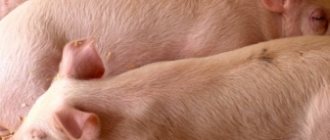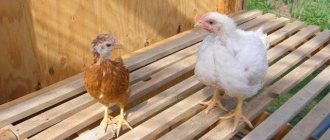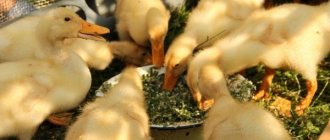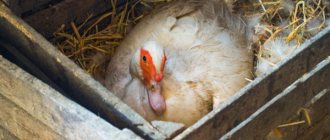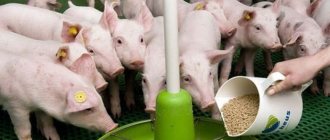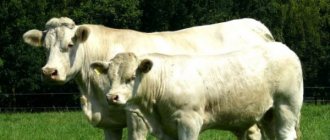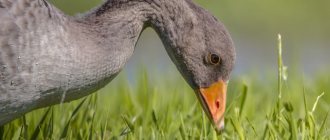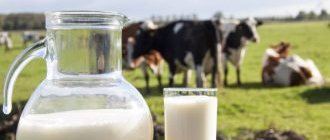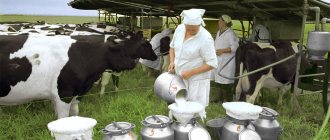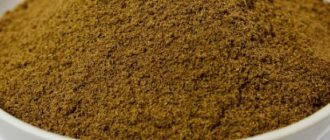The benefits of sprouted wheat in the diet of laying hens
Cereal has a number of undeniable positive qualities that affect the full development of laying hens:
- A large number of microelements and vitamins help boost immunity and increase resistance to many diseases, including infectious ones.
- Sprouts fight excess weight in chickens by reducing cholesterol levels and increasing metabolic processes.
- As noted above, the introduction of complementary foods helps to increase the quality of eggs produced, as well as stabilize and increase quantitative indicators. This is achieved by normalizing hormonal levels.
- A large number of B vitamins, calcium and magnesium do preventive work in the skeletal system and the musculoskeletal system as a whole. Regular consumption reduces the risk of arthrosis and significantly improves joint mobility.
- Plant fibers activate the intestinal tract and stimulate the production of gastric juice in birds.
An excellent source of calcium, iron, vitamin E and other beneficial substances is sprouted grain.
The grains are spread over bedding containing bacteria, which is placed in the chicken coop. The produced vitamin B in the process of biochemistry produces heat, which makes the birds’ wintering stay more comfortable.
Sprouted grains change their chemical composition in the process, maximizing the content of nutrients. Scientists have also proven that dry wheat takes longer and is 30-40% harder to digest, in contrast to similar wheat with sprouts. In other words, complex compounds are broken down already at the seedling stage, thereby facilitating the work of the gastrointestinal tract of chickens.
When not to give it
It should be understood that uncontrolled consumption of food does not lead to an improvement in the health of birds, but to its sharp deterioration.
- Iron oversaturation leads to malfunction of the pancreas, liver and other internal organs. Therefore, farmers give no more than 30% of sprouted seeds from the total amount of food.
- But sprouts alone also cannot be fed, since the latter are dietary products and do not fully saturate them with carbohydrates and complex microelements. The result is atrophy of muscle mass and a general loss of strength, and as a consequence of immunity. Read why chickens fall on their feet here.
- You should not engage in long-term complementary feeding, since sprouted grains can negatively affect the intestinal tract, causing bloating and diarrhea.
For what diseases is it relevant?
Sprouted grains are used to strengthen general immunity, as maintenance therapy for a number of serious diseases that require the administration of antibiotics.
Also, similar food is added to the diet of weakened individuals, young laying hens, when inflammation of the oviduct is detected. This article will tell you what to do if a chicken’s oviduct falls out.
If constipation or a malfunction of the intestinal tract is detected, the veterinarian will also prescribe sprouted grain in this case.
In case of any illness, you should still follow the diet and monitor the dosage of feed, since an excess of vitamins and microelements can play a negative role in the health of the chicken.
When to feed wheat to chickens?
If you are a caring owner, you can prepare such tasty and healthy food for your feathered livestock throughout the year. But if you don’t have the energy and time to prepare sprouted grains all year round, then you can add wheat to your diet only in winter and autumn.
There are several recommendations regarding feeding chickens with such a useful product. Experienced farmers advise giving sprouted wheat to birds in the evenings, when they go to sleep. In this case, the grains must be poured onto deep litter in the chicken coop.
There are many arguments in favor of feeding birds sprouted wheat during the day and at night. Some farmers argue that it is also necessary to feed chickens with sprouted wheat during the day. After all, it is at this time of day that chickens eat grain most actively, since they are constantly on the move and quickly work up an appetite.
In addition, it is recommended to feed chickens during the day if they are overweight. This way they won't overeat at night. Take this indicator into account if you raise these birds for slaughter.
Signs of overfeeding with wheat germ
Wheat sprouts contain a concentrated amount of iron; it is the saturation with this microelement that has a detrimental effect when overfeeding. Penetrating through the blood arteries into the organs, it accumulates there and can provoke poisoning of birds.
Scientists have proven that an excess of iron leads to the body ceasing to absorb calcium, manganese, zinc, and vitamin E. The susceptibility to phosphorus also decreases.
Read about the diet table for laying hens at home here.
Overeating leads to night blindness, bone destruction and lameness in laying hens, as well as thyroid diseases and goiter growth.
Harmful properties
Sprouted grains contain a large amount of iron. Its excess contributes to metabolic disorders. In addition, the element has the ability to accumulate in tissues and cause poisoning when entering the body in large doses.
Excess iron leads to decreased absorption of vitamin E, calcium, phosphorus, zinc and magnesium. This explains the harm of feeding sprouted grain to birds in uncontrolled doses. Therefore, it is important to feed grain sprouts to poultry correctly and in limited quantities.
How to germinate: instructions
Sprouting wheat grains does not require special equipment and is understandable even for novice farmers. At the same time, the presence of a large amount of nutrients and microelements makes the product incredibly useful.
Wheat selection
The first thing people pay attention to is the source material. Grains are bought in different places where it is most comfortable: market, store, private farm. But the selection conditions are always the same:
- grains should not contain impurities;
- their color varies from light shades of yellow to dark brown;
- The cereal is dry, without rot or mold.
The average price of seeds for germination in Russia is 50 rubles. for 400g.
Farmers sprout wheat, both as an independent product and in combination with other cereals.
Soak
Soak the future fertilizer in a large container with high sides. Suitable for this purpose: a basin, a bucket, a saucepan, a plastic bottle with a cut neck. Please note that grains are prepared for germination in enamel or plastic containers, since metal tends to oxidize and negatively affect the chemical composition of food.
- Liquid is poured at room temperature, but not higher than 50-60˚C if the material was stored warm. If it’s cold, then it’s hot.
- Then it is placed in a dark place and covered with a lid and board.
The process of soaking the grains speeds up their breaking through the shell.
Excerpt
Keep the container in a dry, warm and shaded place for at least 15 hours. No further actions need to be applied to the wheat during this time.
Laying out the grains
Laying out wheat is the most critical stage in germination. Before the process, it is better to immediately decide where you will work with the material next. The place should be warm and protected from drafts.
- The contents of the container are poured into another, clean container, removing excess water, or laid out on film.
- For wrapping, take either a piece of clean cotton fabric or medical gauze.
- The fertilizing layer is not too thick to avoid rotting.
- Cover the top with a damp, wrung out cloth.
Make sure that the top material does not dry out. To do this, spray it periodically.
How to cook?
The composition of the ingredients and liquid base of mash for laying hens varies depending on the time of year. The summer diet of chickens is dominated by fresh herbs and vegetables, and in the cold season it is important to take care of the required amount of vitamins. The preparation of most mash is carried out as follows:
- Boil vegetables and food scraps;
- While vegetables are cooking, thoroughly dissolve vitamin premixes, mineral supplements and salt in water;
- Pour grain, bran, and other dry ingredients into water and leave for 15-30 minutes;
- Grind the cooked vegetables on a coarse grater and add to the mixture;
- Mix until smooth and place in feeders.
- Potatoes and carrots do not need to be peeled before cooking, but they should be washed to remove earthen lumps. The lower rhizome of beets needs to be cut off and peeled.
Summer recipe
For most adult laying hens, the following mash option is suitable (the ingredients for preparing 2 kg of finished feed are given):
- Boiled vegetables – 400 g;
- Chopped greens – 100 g;
- Crushed barley grain – 250 g;
- Corn grain – 200 g;
- Oat bran -180 g;
- Crushed split peas – 100 g;
- Sunflower meal – 100 g;
- Meat and bone meal – 50 g;
- Crushed shell rock – 20 g;
- Liquid for filling – 600 ml.
The resulting amount of feed is suitable for one-time morning feeding of 18-25 adult individuals of egg-laying breeds. The amount of mixture should be selected for each farm individually.
Vitamin mixtures in the form of powder or drops should be added once a month in the summer. You can purchase such mixtures at a poultry market or at a pet store; it is important that the mixture contains B vitamins.
To increase egg production, chickens need easily digestible protein, which can be supplemented with the mash using slightly warmed yogurt for pouring.
Freshly picked weeds, which must be washed from the soil before chopping, are suitable as greens. Chickens peck well:
- liver grass;
- woodlice;
- carrot and beet tops;
- crushed watermelon rinds.
Sunflower meal contains the necessary fats; in its absence, you need to add feed fat to the chicken mixture at the rate of 10 grams of fat per kilogram of the finished mixture.
When purchasing one-day old chicks or hatching chicks on the farm, it is important to provide them with a special diet in the first days of life. To feed chickens up to 7 days, you need to use this version of the mash:
- Boiled egg whites – 40 g;
- Low-fat cottage cheese – 30 g;
- Fine millet – 30 g;
These components must be mixed and poured with half a glass of heated (45-50 degrees) milk or low-fat kefir, let it brew for 20 minutes and give to the chickens. This amount is suitable for feeding 6-12 newborn chicks (depending on the breed and number of days from birth, as they grow quickly).
Winter recipe
Herbal meal is made in the summer by drying and grinding vegetable tops into powder. The collected tops need to be dried in the shade, since direct sunlight destroys vitamins. If the farmer has the space, it is best to store these tops in dry bundles and chop them in the winter just before adding them to the mash.
To prepare 2 kg of winter mash, you need the following ingredients:
- Crushed corn grain – 500 g;
- Whole barley grain 300 g;
- Boiled vegetables – 300 g;
- Meat and bone meal – 150 g;
- Herbal flour – 50 g;
- Sunflower cake – 70 g;
- Crushed shell rock – 15 g;
- Fish oil – 15 g;
- Filling – 600 ml.
It is important to add 10 grams of table salt to the feed 1-2 times a week, which will help laying hens get rid of internal intestinal parasites.
To maintain high egg production in the cold season, it is good to steam the winter mixture with meat broth or whey. Whey is an additional source of protein and easily digestible calcium, necessary for egg shells.
Sprouting Tips
Experienced farmers know several secrets that ensure the most successful and complete germination of wheat. Here are a few of them:
- Sprouts 5-6 mm long can be cut and mixed into the main diet of laying hens.
- Be sure to germinate in the winter, as birds are often motionless during this time, and digging grains out of the litter keeps them moving.
- Grains sprouted a second time have even more vitamins than when synthesized the first time.
- The sprouted material does not last long, so it is best to process the grains in small batches.
Other healthy grains
In addition to wheat, it is recommended to include millet, pearl barley and rapeseed in the chicken diet.
It is recommended to include grains in the diet
Millet
Young breeders are interested in whether it is possible to feed millet to chickens? Millet is considered a very healthy cereal. It contains vitamins such as B1, B2, B5, PP, as well as phosphorus, magnesium, iron and other useful components.
It is a leader among grains that are used to feed poultry. It is even recommended to introduce boiled millet into the diet of chicks. The grain is pre-soaked in hot milk and then mixed with a boiled egg. A millet diet in adult chickens increases their egg production rate. If you introduce millet and millet into the diet of chickens, the shells on the eggs will be strong, and the laying hen will feel strong and healthy.
Pearl barley
As for pearl barley, it is essential for chickens. It contains a large number of amino acids, as well as lysine, which prevent feather loss in birds. To feed chickens, it is recommended to use the most common pearl barley that has undergone preliminary preparation. In this case, the upper hard skin is removed from the grain. Since chickens do not chew their food, it is this type of grain that will be quickly digested in their stomach.
Pearl barley
Barley can be given in crushed form, or it can be steamed like wheat. You need to know not only how to give pearl barley to chickens, it is important to have information on how much grain to give. Pearl barley should not exceed 20% of the bird's daily diet. Otherwise, disruption of the functioning of the gastrointestinal tract of birds cannot be avoided.
Rape
We should not forget about such a valuable and useful crop for birds as rapeseed. This plant contains many vitamins and microelements necessary for the normal growth and development of birds. It is also important that it contains only 1% fat. This prevents the development of obesity in chickens. Raw rapeseed is used to produce cake, flour and meal. All this can be used as poultry feed.
Almost all grain crops are suitable for feeding chickens. Each of them differs in its composition and beneficial properties. You should not choose just one, as monotony can harm the birds. A varied and balanced diet is the key to the health of poultry, as well as a high level of egg production.
Rules for feeding chickens with wheat
There is no clear advice on the feeding regime for laying hens with wheat. Some farmers agree that feeding should only be done at night, while others say that feeding should also be done during the day.
This material will tell you about premixes for laying hens.
It is best to feed chickens with the product in the evening, before bed. In this case, the grains are poured directly onto the litter. This way, nutrients are absorbed better.
At the same time, during the daytime birds are more active and mobile, so some poultry farmers introduce grains into the diet in the first half of the day. Also, if chickens are obese, it is recommended to feed them not at night, but in the morning.
How to select and prepare wheat for germination?
Also check out these articles
- When to plant petunia seedlings in 2021
- Strawberry Queen Elizabeth
- What to feed mulard ducks
- Grape variety Sensation
Sprouting wheat for chickens and chicks is not difficult, but for this you need to follow some rules. The fact is that during the process, the grain may begin to rot, become moldy, acquire an unpleasant odor, or not hatch at all.
Feed wheat is used for chickens
For chickens, feed wheat is used. It is not suitable for human consumption due to its low quality, but for birds it is what is needed. However, this is not a rule that should be followed relentlessly; if the breeder has the means, you can buy the highest grade wheat, it’s just that feed is always cheaper, and that’s why it’s popular.
Before germination, the grain is filled with water and washed several times to get rid of dirt. It is also important to remove all floating (empty) husks, since they will be of no use.
conclusions
- Sprouted wheat is a storehouse of useful vitamins and microelements for laying hens. In addition to a large amount of vitamin A and group B, it contains iron, magnesium and other useful substances.
- In such a product, due to the chemical processes occurring, the concentration of vitamins is several times higher than in dry wheat.
- Sprouts are considered a dietary product; however, you should not overfeed chickens, as an overdose can play a negative role in the immune system.
- The germination method itself is simple and accessible even to beginners. But due to the fact that the product quickly deteriorates, it is not recommended to process grains in large quantities.
Feeding time
Both methods of feeding during the day and at night have their positive sides. If it was described above what are the advantages of scattering grain over bedding materials, this does not mean that you should use only this option.
Chickens will be happy to receive sprouted grain during the day - at this time the feed consumption becomes higher. The bird moves all the time, leads an active lifestyle, and therefore will work up an appetite very quickly.
If chickens are overweight, it is much more beneficial for them to receive nutritious grain during the day to avoid obesity.
The following table will outline the benefits of both day and night feeding of birds:
| Feeding during the day | Feeding at night |
| Grain is poured into feed containers | Heat activation in bedding material |
| The bird eats grain more actively | The bird loosens the litter on its own, and the processes of rotting and debate will no longer be a problem |
| Obese chickens will not gain weight | If they are constantly indoors, the birds will be busy all the time |
| Opportunity for gaining excess weight during fattening for meat |
We invite you to join our group on VKontakte or Odnoklassniki, where new articles are published, as well as news for gardeners and livestock farmers.
Growing sprouted chicken feed step by step
The main thing here is that if you simply pour water over the grains, germination will take 2-3 weeks! The highlight is that we wet and moisturize.
- Any grain of your choice, such as wheat, rye, barley or oats. By the way, you can also germinate legumes: beans and peas.
- Boxes for seedlings, baking dishes, empty cans, plastic jars of sour cream, boxes of milk or kefir, low pots or bowls, in short - any containers that are on hand.
- Drinking water or melted water from the yard, it doesn’t matter.
- The window sill is on the sunny side, and if there is a lamp for illuminating the seedlings, then this is absolutely wonderful!
What to do about it?
Step 1: Soak the grains in water in a large bowl overnight.
Step 2. Wash and rinse the soaked grain.
Step 3. Distribute the grains in a germination container in a layer of 1-2 cm, this is important for air exchange.
Step 3. Install in a sunny place, the most normal temperature on the windowsill is 15-23º C.
Step 4: Moisten several times a day. For example, pour water and immediately pour it out. If you don’t have time to mess around, then pour some water into the bottom and for the first 2-3 days just stir with a spoon so that all the grains are moistened evenly.
Step 5. Once the roots begin to grow, it is best to stop stirring.
Step 6. You should moisten with a spray bottle at least in the morning and evening if you are not at home during the day.
Note. If the air in the house is dry, it is better to cover the dishes with plastic wrap for the first few days. For example, have plastic bags on hand. Either cover the top or stuff the containers directly into the bags to retain moisture and prevent the seeds from drying out completely between rinses and soaks.
This is what wheat will look like after 4-5 days of moisture.
After 5-7 days the wheat turned into a mat.
In this photo there are 9-10 days, the second and third green arrows are visible.
Step 7. In about a week the sprouts will be 5 cm, and after 10 days they will be 8-10 cm. Did you see the second green arrow on the sprout? The food is ready to eat!
Feeding recommendations
There are several recommendations for feeding chickens with this useful product. It is best to give sprouted grains to chickens in the evening, before going to bed, pouring them directly onto the deep litter of the chicken coop.
Arguments in favor of this unusual approach
There are several arguments for this approach. The first is that once on the litter, the grains begin to release vitamin B. This, in turn, stimulates the biochemical processes occurring inside it and generates additional heat, which, spreading throughout the poultry house, warms the chickens.
Feeding wheat germ from the litter has many benefits
The second argument is that in the autumn and winter, when it gets dark and cold outside early, chickens, accustomed to going to bed at a certain time, cuckoo for a long time in the evenings in the chicken coop. By pouring grains into the bedding, the farmer gives his charges the opportunity to entertain themselves and eat before bed.
Thirdly, looking for grains, chickens loosen the litter with their beaks and paws, thus preventing rotting and the accumulation of moisture inside it. This frees you from extra work in the coop. This bonus is especially relevant in winter, since the health of the chickens depends on the level of humidity and heat in the chicken coop.
Which grain is best for chickens?
For laying hens, grain mixtures are prepared from grain, they are given whole or crushed, or mash is made. For this you can use millet, wheat, buckwheat, corn, oats, barley, sunflower. The introduction of grain into the diet of chickens has a positive effect on their egg production and provides birds with the most important vitamins and microelements for them.
The grain of each of the above crops has its own positive qualities:
- Sunflower acts as a supplier of energy for the body of birds and increases their egg production. Experienced breeders recommend introducing its seeds in winter. This will increase the birds' immunity.
- Barley is mainly recommended for feeding meat birds, such as broilers. Barley can be given to chickens throughout the year. The grain of the crop has sharp tips. This can damage the birds' digestive system. Therefore, barley is mixed with other feeds.
- Millet. This grain contains a lot of fiber. Therefore, it is introduced into the diet of young chicks. Chicken can be given millet with a boiled egg. Already grown chicks are prepared with a mixture of millet, eggs and chopped greens.
- Wheat is high in calories. It contains protein, which is easily and quickly absorbed by the bird’s body. Experienced breeders give chickens not whole wheat grain, but bran from it. During the summer, they should make up no more than 80% of the chickens’ total diet, and in winter - 40%.
- Oats. It contains many vitamins necessary for the rapid growth and egg production of laying hens. How to feed oats to chickens? The grain also contains a lot of fiber. The bird's body spends a large amount of energy to digest it. Therefore, oats should not make up more than 10% of the total diet.
Wheat is high in calories
Despite the beneficial properties of each of the above grain crops, you cannot stop at just one of them. The diet of birds should be varied.
Step-by-step instructions for germinating wheat at home
The growing technology consists of three simple stages:
- Soak.
- Excerpt.
- Laying out on fabric.
Each stage requires simple equipment and materials.
Video: wheat germination for laying hens
Basic soaking technologies
For soaking grain, it is better to use containers made of neutral material - glass, ceramics or enameled. Containers made of stainless steel, aluminum, copper or plastic are extremely undesirable, as they can react with components released by the germinating grain. Soaking is carried out in a wide container, where the grain is filled with warm water (about 40 ° C). Water should cover the material with a layer of up to 2 cm. If the wheat was stored in a cold room in winter, then it needs to be given some kind of heat shock - steamed with water at a slightly higher temperature.
In this case, the main thing is not to overdo it and prevent overheating - the temperature of the mixture should not be more than 40 °C. Another soaking method involves using cold water and covering the container with film or a lid. After 8-10 hours, the water is replaced and soaking lasts another 8-10 hours.
Excerpt
The container with soaked grains should be covered with a lid or cloth and set aside in a dark place. The temperature in such an “incubator” must be warm in order to stimulate the raw material to grow. This stage lasts from 12 to 17 hours in complete rest - no other manipulations are necessary. After this, the liquid is drained and the wheat is ready for germination.
Laying out the grains
The placement of grains for germination is carried out in the following sequence:
- in a wide, shallow container, oilcloth or plastic film is placed on the bottom;
- seeds are placed in a small layer on the surface of the film;
- a damp cloth made of natural substances (linen, cotton) is placed on top;
- As the fabric dries, it becomes wet.
During germination, you need to make sure that the layer of grain is not too large and dense; you need to stir it carefully and make sure that the seeds do not get wet or rot. Wheat is sprouted within two days - this is the optimal period for obtaining sprouts. Further cultivation leads to the formation of stronger and tougher shoots with a good content of nutrients.
How to germinate grain for chickens in winter with your own hands
Author: Chicken Ryaba
/ 03 Dec 2021 at 06:48
Good afternoon, experienced and novice poultry farmers! Today we will show you step by step how to sprout grain for chickens at home for feeding in winter. Sprouted grain food is the most desirable treat for our feathered beauties!
Our winter is long and snowy, so fresh grass is unavailable for almost 6 months of the year. Grasses and weeds are very nutritious for chickens and chickens, providing them with protein and fiber. And how interesting it is to watch when chickens nibble the tops of plants and dig roots with their paws in search of insects. This is a wonderful sight! And now it’s winter here and everything is covered in snow.

